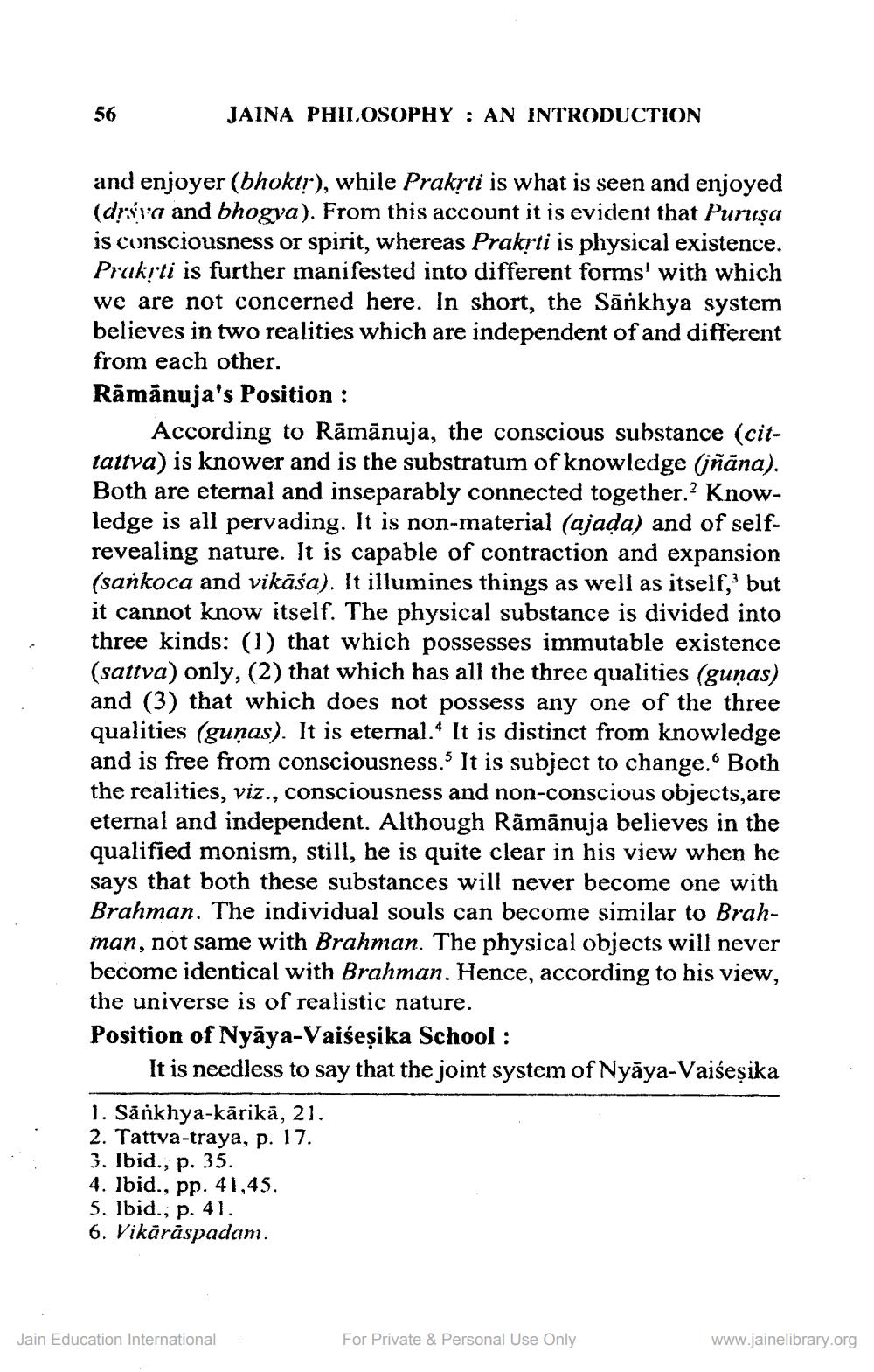________________
56
JAINA PHILOSOPHY : AN INTRODUCTION
and enjoyer (bhoktr), while Prakrti is what is seen and enjoyed (drýva and bhogva). From this account it is evident that Purusa is consciousness or spirit, whereas Prakrti is physical existence. Prakrti is further manifested into different forms with which we are not concerned here. In short, the Sānkhya system believes in two realities which are independent of and different from each other. Rāmānuja's Position :
According to Rāmānuja, the conscious substance (cittattva) is knower and is the substratum of knowledge (jñāna). Both are eternal and inseparably connected together.? Knowledge is all pervading. It is non-material (ajada) and of selfrevealing nature. It is capable of contraction and expansion (sankoca and vikāśa). It illumines things as well as itself, but it cannot know itself. The physical substance is divided into three kinds: (1) that which possesses immutable existence (sattva) only, (2) that which has all the three qualities (guņas) and (3) that which does not possess any one of the three qualities (guņas). It is eternal. It is distinct from knowledge and is free from consciousness. It is subject to change. Both the realities, viz., consciousness and non-conscious objects are eternal and independent. Although Rāmānuja believes in the qualified monism, still, he is quite clear in his view when he says that both these substances will never become one with Brahman. The individual souls can become similar to Brahman, not same with Brahman. The physical objects will never become identical with Brahman. Hence, according to his view, the universe is of realistic nature. Position of Nyāya-Vaiseșika School :
It is needless to say that the joint system of Nyāya-Vaiseșika
1. Sänkhya-kārikā, 21. 2. Tattva-traya, p. 17. 3. Ibid., p. 35. 4. Ibid., pp. 41,45. 5. Ibid., p. 41. 6. Vikärāspadam.
Jain Education Internationali
For Private & Personal Use Only
www.jainelibrary.org




